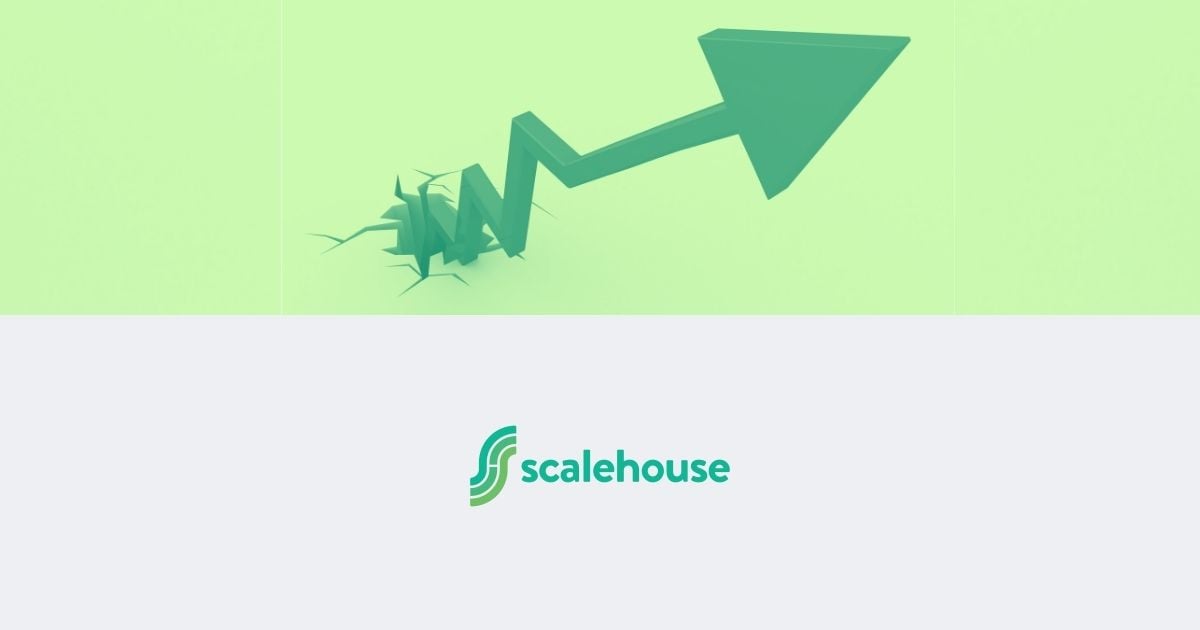How Service Businesses Can Successfully Build Product Growth Engines
 Tiama Hanson-Drury
Tiama Hanson-Drury“Can service businesses adopt PLG?”
If you’re asking this before you make product investments, then you’ve already made smarter choices than so many other leaders.
But no matter where you’re at in your product launch process, the following tips and examples will help you learn what to do and what not to do when adding product led growth strategy to an existing service business. In this post, we’re covering:
● How building for internal service teams vs. external clients differs
● A step-by-step guide on how to approach adding product growth
● Handy resources to help guide you on your new product journey
Firstly, the question “Can service businesses adopt PLG?” is a question we get A LOT at ScaleHouse and our counsel is that with the right strategy, a service business is as capable of adopting a PLG (Product Led Growth) motion as any other. As a refresher, PLG means a product that is built to be evaluated, trialed, purchased, and used without any human sales layer. As Wes Bush, author of Product Led Growth further describes, it is “a go-to-market strategy that relies on using your product as the main vehicle to acquire, activate, and retain customers.”
Firstly, let’s tackle an important strategy point. If you are a service led business, it’s important to know whether you are building a product for your internal teams or for a new customer segment.
#1: Know Who You Are Building For
An easy mistake for a service business looking to add PLG is to invest in the building of a product that is going to be used by your internal stakeholders and think that it can automatically be sold externally. The thinking often goes something like, “Why don’t we build the software ourselves to gain efficiency in delivering services to our customers (internal product) and also make it available for customers to buy as well (PLG)?” We’ll refer to that as Scenario A.
Scenario A sounds logical, no? It even bears resemblance to one of the most often quoted origin stories behind successful startups; “I needed a software or product to do a job and realized nobody made it; so, I built it for myself and others.” We’ll call that Scenario B.
The difference between these two scenarios is that B follows one of the golden rules of faster product scaling: build for one persona at a time. In scenario A you are building for a team performing services, and you are also building for a client who is purchasing that software through a PLG motion.
In scenario B, you are looking to buy a product to use yourself, realize there isn’t one, and so you build it for buyers similar to yourself. You, yourself, and others with similar pains, willingness to pay, and user requirements are the persona.
Unless your internal teams have the same pain points, ways of working, and support needs as your external customer persona, you are talking about two distinct personas. You will grow faster and accelerate adoption by investing in separate teams to support the two separate internal vs. external personas.
PLG is not a product-thing. It’s a company-wide effort where every team influencing growth plays a role in executing the strategy, which means you need to include them in the building of the strategy.
#2: Steps To Building A Best In Class PLG Strategy
At the highest level, there are 7 elements that I’ve found to be critical to successful PLG strategies:
- Start with understanding the pain point your customer wants to overcome, simply
This is often the hardest part! Without this clear understanding, companies are not able to focus on creating a frictionless and compelling offer. - Establish a companywide PLG strategy
PLG is not a product-thing. It’s a company-wide effort where every team influencing growth plays a role in executing the strategy, which means you need to include them in the building of the strategy. - Design for self-serve to simplify the buying process
Remember you are optimizing the purchase experience for online transactions that reduce the need for sales interactions to maximize the conversion funnel. Start with simplified pricing, packaging, maximizing the confidence of buyers to make decisions on their own and make the checkout process feel easy and well-informed. - Reduce time to value
This lens must be used to look at your MPV. Have you tried everywhere to minimize the effort required for customers to experience the ‘aha’ moment with your product? - Investing in product data so that you can make data driven decisions
Data won’t just define your success. It will inform the decisions you make about how and why to build. - Leverage existing customers to attract more customers
Often cited as a great example of ‘virality’ in product- build strong network effects into your product experience so that initial customers receive more value as more people sign up. This can take the form of value through usage (i.e. Slack- more users, easier to communicate to them) or monetary benefits (i.e. referrals). - Ensure there is a long-term expansion strategy to monetize
•Remember, the long-term goal with PLG is to convert active freemium or trial customers into paying customers. That is why it’s critical that from the initial planning stage, you’ve considered ways you plan to achieve this.
PLG is hot! Which means there are a number of resources available to guide you on your journey to adding PLG to your P&L. Not all are essential at the earlier stages of your growth journey, so to help you, we’ve compiled the three best for you and the management team who will be deploying this exciting growth strategy:
- The Ultimate Product-Led Growth Resources Guide from Kyle Poyar at OpenView. First published in 2018 and updated since, Kyle has assembled a powerful list of resources to help you inform your thinking about PLG.
- 4 Popular Product Led Growth Frameworks - nice summary from Digital Uncovered of frameworks which have been deployed to catalyze growth across brands like Instagram, Pinterest, HubSpot, etc.
- 11 Essential Product Led Growth Metrics - Katryna Balboni at User Interviews breaks down some of the most important SaaS metrics to align your management team around when starting your PLG journey.
Service businesses can successfully deploy PLG to enable significant growth in your business, but it will require distinctly different strategies and ways of working than the manner in which you’ve used professional support with past clients. Being clear about the ways that PLG will work differently, and what is expected of the company to succeed in this new area is essential to establish PLG effectively.
Want to talk more about how to implement PLG in your service-based business? Reach out to us.



